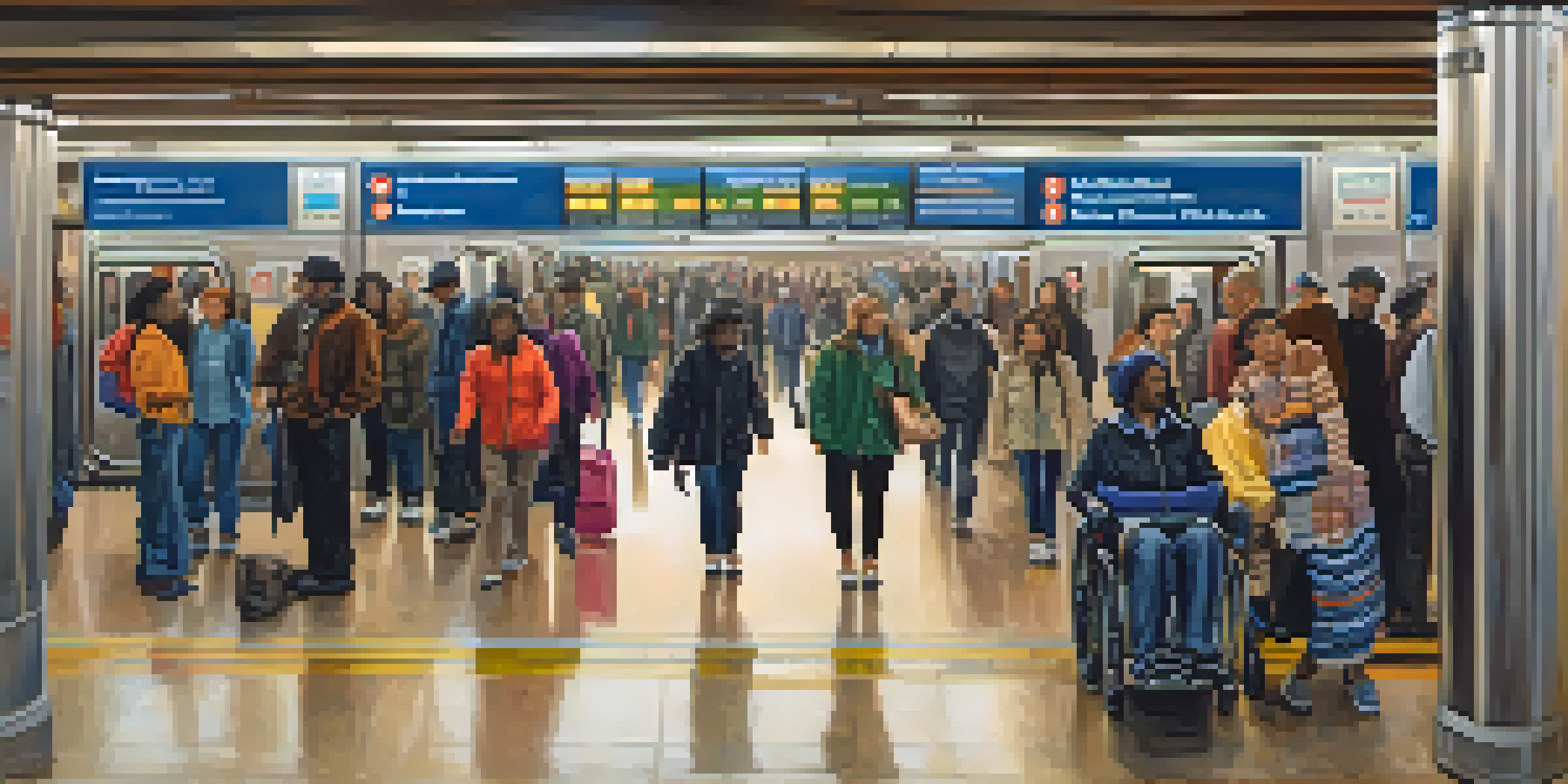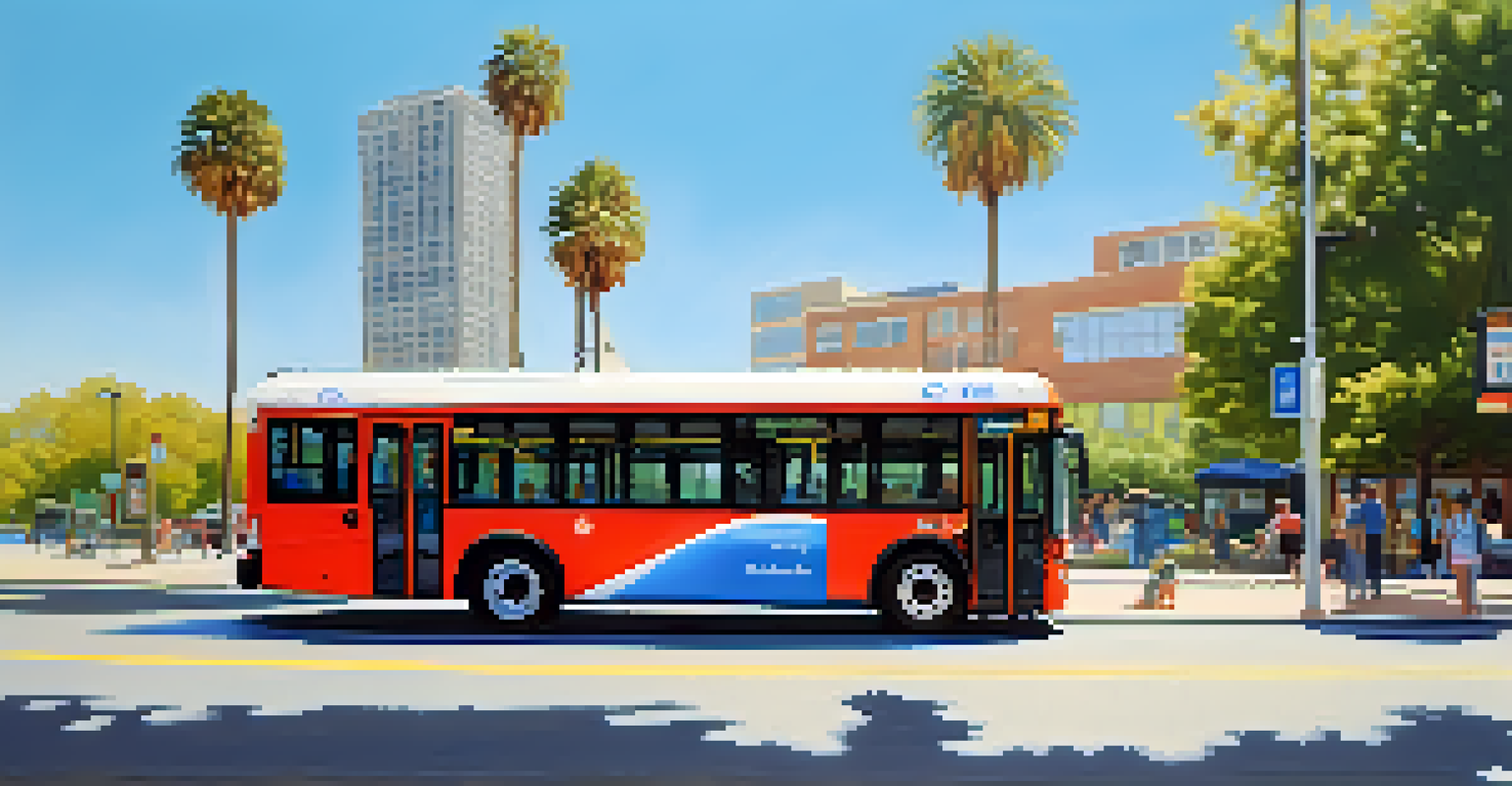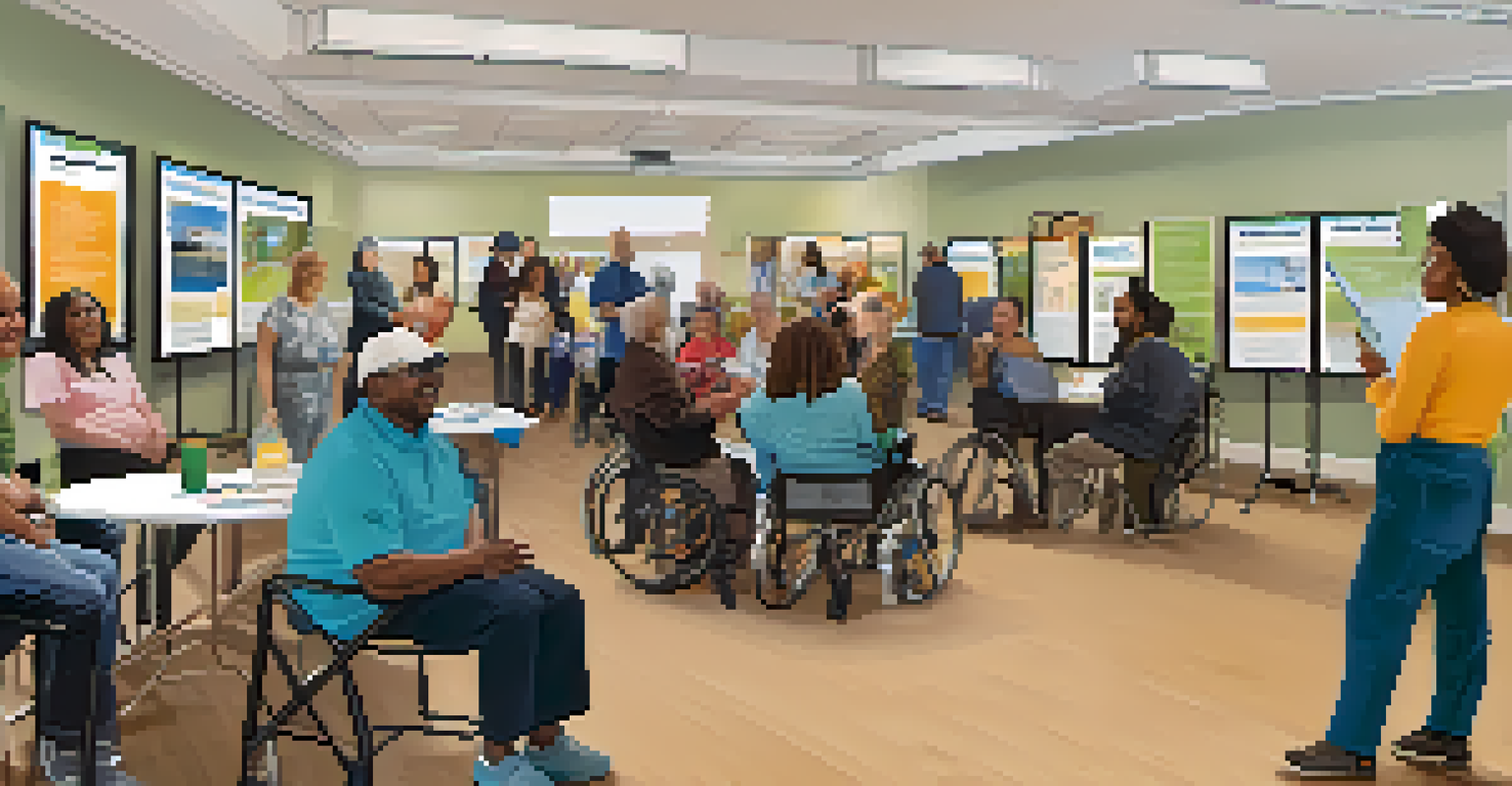Accessibility in Chicago Transit: Options for Everyone

The Importance of Accessibility in Urban Transit
Accessibility in transit is crucial for ensuring everyone can navigate the city confidently. In a bustling metropolis like Chicago, it’s essential that public transportation serves not just the able-bodied, but also those with disabilities, the elderly, and families with young children. When transit systems are designed with accessibility in mind, they foster inclusivity and independence, allowing all residents to participate fully in city life.
Accessibility is not a privilege, it is a right.
Imagine a mother with a stroller trying to maneuver down a crowded subway platform or a wheelchair user facing stairs without a ramp. These scenarios highlight the necessity of accessible transit options. By understanding the diverse needs of users, transit authorities can create solutions that benefit everyone, enhancing the overall experience of commuting in the city.
Ultimately, prioritizing accessibility in urban transit isn't just a legal obligation; it’s a moral imperative that strengthens community ties and boosts local economies. An accessible transit system ensures that every resident has the opportunity to explore, engage, and thrive in Chicago.
Chicago Transit Authority's Commitment to Accessibility
The Chicago Transit Authority (CTA) has taken significant strides toward enhancing accessibility across its services. With a focus on compliance with the Americans with Disabilities Act (ADA), the CTA has implemented various initiatives, such as retrofitting older train stations with elevators and ramps. These upgrades are not just about meeting regulations; they reflect a commitment to creating a more inclusive environment for all riders.

In addition to physical infrastructure improvements, the CTA provides resources like the RIDE program, which offers paratransit services for individuals unable to use standard transit options. This program ensures that those with mobility challenges can still access essential services and participate in their communities, reinforcing the idea that everyone deserves equal access to transportation.
Accessibility Enhances Urban Transit
Designing transit systems with accessibility in mind fosters inclusivity and allows all residents to fully engage with city life.
As the CTA continues to evolve, it remains dedicated to seeking feedback from riders with disabilities to inform future improvements. This ongoing dialogue helps the agency to better understand the specific needs of its diverse ridership and to prioritize enhancements that will make a tangible difference.
Accessible Features on CTA Buses and Trains
CTA buses and trains are equipped with numerous accessible features designed to assist riders with varying needs. Most buses have low floors, making it easier for passengers using wheelchairs or those with mobility issues to board. Additionally, every CTA bus is equipped with a kneeling feature, which lowers the front of the bus to the curb, further facilitating accessibility.
The future belongs to those who believe in the beauty of their dreams, and we must dream of a world where everyone can navigate it freely.
Train stations across the city are increasingly featuring elevators, tactile guidance strips, and visual and auditory announcements. These features help individuals with visual or hearing impairments navigate the transit system more confidently. The CTA’s commitment to providing clear information is vital for ensuring that all riders feel secure and informed during their journeys.
Moreover, the CTA encourages riders to engage with their accessibility resources. For instance, the Transit App provides real-time updates and information about accessible routes, enabling riders to plan their trips effectively. These user-friendly tools enhance the overall transit experience and empower passengers to travel independently.
Navigating Accessibility Challenges
While strides have been made towards enhancing accessibility, challenges still exist within the Chicago Transit system. Some older train stations lack elevators, creating barriers for individuals who cannot use stairs. This inconsistency can lead to frustration and limit mobility options for those relying on public transit.
Moreover, crowded buses and trains may pose difficulties for passengers with disabilities, particularly during peak hours. The CTA is aware of these challenges and continuously seeks ways to improve the rider experience, but for many, these limitations can feel overwhelming. Addressing these concerns requires ongoing collaboration between transit authorities, advocacy groups, and the community.
CTA's Commitment to Inclusivity
The Chicago Transit Authority is dedicated to improving accessibility through infrastructure upgrades and paratransit services.
Advocates for accessible transit often emphasize the importance of public awareness and education. By fostering a culture of understanding and empathy, we can collectively work towards a transit system that is not only compliant with regulations but also genuinely accommodating to everyone’s needs.
Community Involvement in Accessibility Discussions
Community involvement plays a vital role in shaping the accessibility features of transit systems. By engaging with residents, the CTA can gather valuable insights and suggestions that lead to meaningful changes. Open forums, surveys, and focus groups offer opportunities for riders to voice their experiences and propose solutions that would enhance accessibility.
For instance, local advocacy groups often collaborate with the CTA to address specific accessibility concerns and promote awareness. These partnerships help highlight the unique challenges faced by various communities, ensuring that transit solutions are tailored to diverse needs. When community members are actively involved, it fosters a sense of ownership and empowerment.
Ultimately, collaboration between the CTA and the community is essential for creating a transit system that works for everyone. By prioritizing dialogue and feedback, we can build a more accessible public transportation network that reflects the values of inclusivity and support.
Resources for Accessible Transit in Chicago
Navigating accessible transit options in Chicago can be made easier with the right resources. The CTA's website offers a wealth of information on accessible services, including maps of accessible routes, details about paratransit options, and tips for planning trips. This user-friendly platform ensures that riders can find the information they need quickly and efficiently.
In addition to the CTA's resources, local organizations provide support and advocacy for individuals with disabilities. Groups like Access Living and the Chicago Disability Alliance offer assistance in navigating public transit, as well as educational programs aimed at raising awareness about accessibility issues. These organizations play a critical role in empowering individuals and advocating for systemic changes.
Community Feedback Drives Improvements
Engaging with the community helps the CTA gather insights that lead to meaningful changes in accessibility features.
Lastly, mobile apps can significantly enhance the transit experience for riders with disabilities. Apps that offer real-time tracking, route planning, and accessibility features ensure that all passengers can navigate the transit system with confidence. By leveraging these tools, riders can feel informed and prepared for their journeys.
Looking Ahead: Future of Accessible Transit in Chicago
As Chicago continues to grow and evolve, so too will the commitment to accessibility within its transit system. Future projects aim to further enhance infrastructure, ensuring that all train stations and bus routes are fully accessible. This forward-thinking approach not only benefits individuals with disabilities but also creates a more welcoming environment for all passengers.
Moreover, technology will play a crucial role in shaping the future of accessible transit. Innovations such as mobile apps, smart transit solutions, and real-time information sharing will help create a seamless experience for riders with disabilities. As technology advances, the CTA can harness these tools to better serve its diverse ridership.

Ultimately, the goal is to create a transit system where everyone feels welcome and can travel freely throughout the city. By prioritizing accessibility, Chicago can set an example for other cities, demonstrating that inclusive transit options are not merely an afterthought, but a fundamental aspect of urban living.